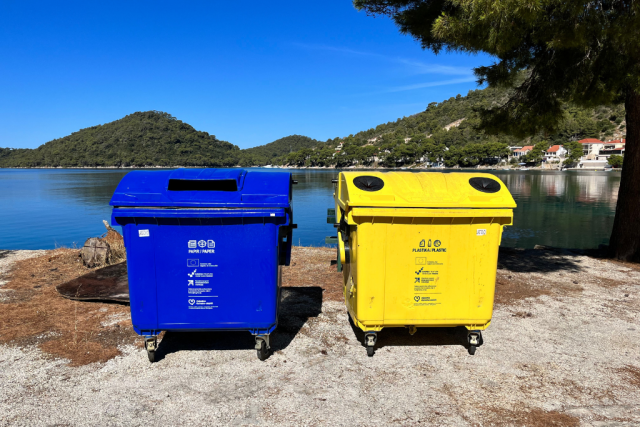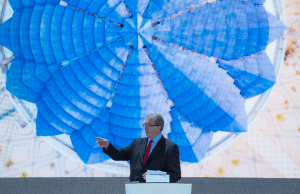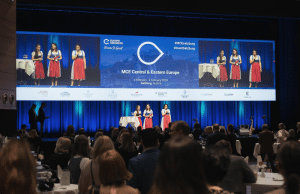WASTE-FREE EVENTS?
The editorial board of Kongres Magazine has been closely following and analysing various sustainability marketing campaigns. It seems their numbers have skyrocketed this year. As it turns out, many of them are misleading and purposefully used by greenwashers to increase sales or improve a company’s reputation. By doing so, they deceive well-intentional consumers and, ultimately, do not contribute to solving ecological and social issues. It is vital to stay aware of the ways in which they attempt to outwit us. Recognising greenwashing is how we can reduce its influence on our choices.
We have decided to prepare a series of articles that will uncover such practices and, hopefully, contribute to a more responsible meetings industry.
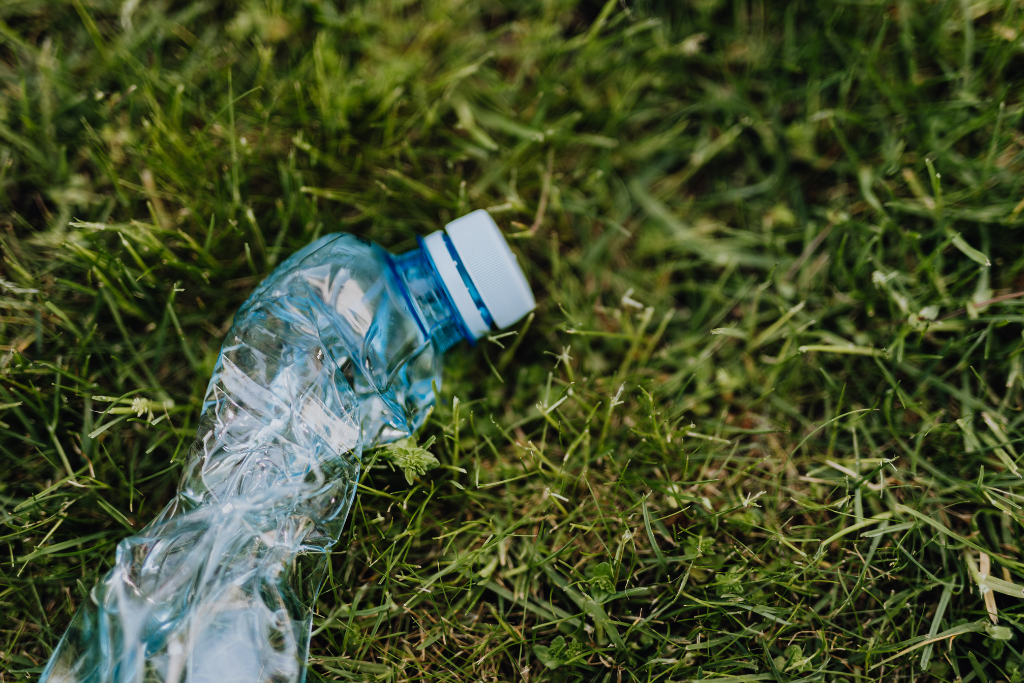
Case 8: THE BEST WASTE IS THAT WHICH IS NOT CREATED
Type of greenwashing: Ambiguity and vagueness of claims
When one finds themselves amid a paradise in one of the most beautiful Croatian islands, they become aware of how fragile the balance between tourism and nature preservation is. In 2006, the island was declared a national park. Since then, the island has been experiencing tumultuous change, and in the past few years, visitors have started noticing yellow and blue waste containers scattered around the island. The European Commission extensively supported their implementation through one of their green projects. Alas, the aptly sorted waste ends up in a disgraceful junkyard next to a road overlooking the sea. The disposal area is a telling sign of the glitz and glamour of modern waste management. In the same breath, it serves as a brutal reminder of the consequences of tourism. No one yearns for waste. Yet, long term, we must approach waste management more responsibly.
Event organisers are thus reliant on the quality of waste management in cities where they organise events. The GDS Index offers insight into how waste is managed by destinations. It measures the percentage of recycled waste, electricity from renewables and hectares of green areas per 100.000 inhabitants.
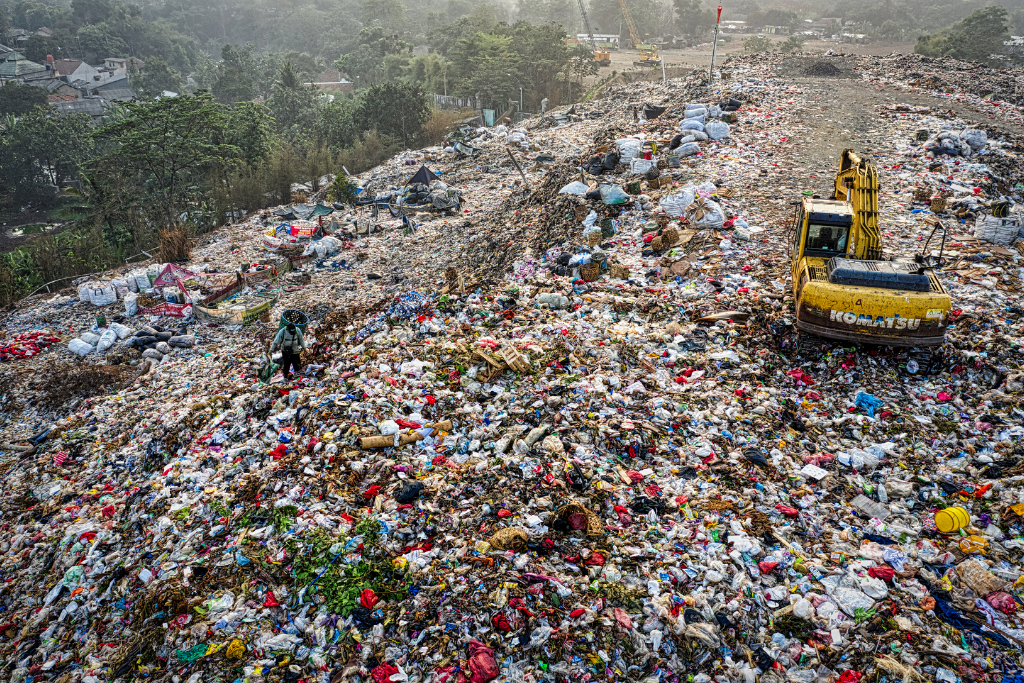
In short, I am glad I can create events in a city ranked top of the comparison, where 47% of all waste is recycled. The waste we create thus seems to end up in good hands.
Yet that does not suggest we should not strive to treat and manage waste at events responsibly. Projects such as Zero Waste or World Without Waste inspire us to do so. It seems we are becoming increasingly aware of the challenge of managing waste; however, life goes by so swiftly that we often do not have time to change. Every event attendee and, more importantly, the event organiser must ask themself firstly how much waste they will create and what will happen to it after the event. In the context of waste management, greenwashing thus occurs because campaigns do not provide holistic information, or the information is not detailed enough.
Event organisers can leverage numerous tools to reduce creating waste or manage it correctly. Either way, we must reduce waste to a minimum, which should become the highest priority. Afterwards, we should prepare waste for reuse, recycle it, in case of biodegradable waste, compost it, reuse it (to produce energy) and ultimately, opt for waste disposal. That is what the European waste policy dictates.
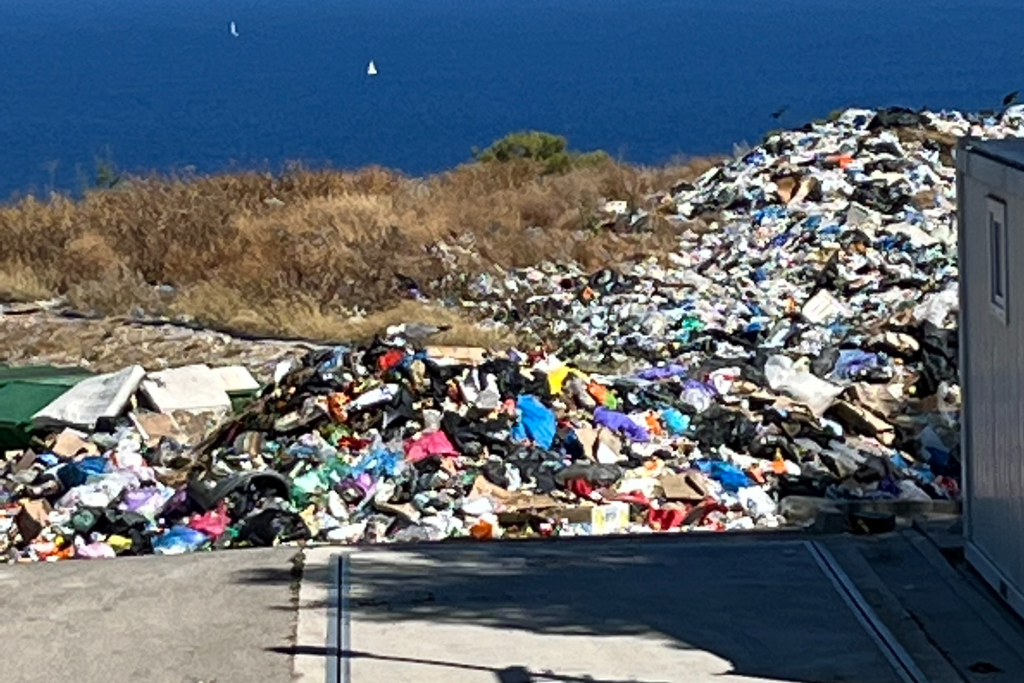
In addition to the listed aspects, we must acknowledge the new geopolitical situation, which has hampered recycling. Recycling is no longer the first option due to soaring energy prices. The most typical example is plastic. Therefore, our solution is to reuse. From our central 5R philosophy, we should primarily focus on Reuse and Refuse. That is how we can contribute most to our environment. Requiring minimal effort and time, we can achieve maximum satisfaction and have a tremendous impact by reusing.
Note: We look forward to hearing about your experiences and good practice cases in waste management.

Environmentalist Jay Westerveld coined the term “greenwashing” in 1986. While on an expedition to Samoa, he was greatly upset by the hotel sign concerning the reuse of towels. He concluded that its purpose was solely a strategy to lower expenses instead of the hotel’s sustainable and responsible aspirations.
Westerveld was the first to use the term greenwashing in his expert article, and the rest is history. The term has survived till today and encompasses all areas of sustainability, including gender equality, poverty, hunger, health, education, paid work etc.
There are several typical examples of greenwashing. They have been around for some time, yet, we continue to be duped by them. We have summarised the most typical examples of greenwashing below:
1. Presenting information selectively
An example of greenwashing is emphasising environment-friendly information whilst withholding negative information. A typical example is ignoring the carbon footprint of event transfers which can amount to 75% of an event’s entire carbon footprint.
2. Lack of proof to back up claims
Let us suppose a company claims their event is green or eco-friendly but does not enclose any concrete proof. They should at least calculate their event’s carbon footprint and support it with a certificate issued by an official institution.
3. Ambiguity and vagueness of claims
Another way of misleading is using loose and undefined terms that are nearly impossible to understand in one way. A recurring example, for instance, is stating that an event is carbon-neutral without elaborating what that stands for.
4. Deceiving and irrelevant labels
Companies will often refer to certificates and labels that, in fact, do not exist or are misleading. Lately, there have been cases of green venue finders with no real foundation. This type of deception is embodied by companies that sell “products without CFC”, even though chlorofluorocarbons are forbidden by law.
5. Highlighting the lesser evil
Event organising is environmentally unfriendly. Hence, the claim that one event is greener than another is plainly false.
6. Selling lies
On occasions, companies choose to proclaim lies. Making false claims, certificates, and inventing facts will mislead customers.
7. Meaningless labels
Certificates, labels and awards can often have little or no meaning. In some cases, organisations even award themselves with certificates or endorsements not backed by any authority.
There are even cases when companies tell outright lies. Sooner or later, such practices are exposed, and information about them spreads like wildfire.
In Britain, the Advertising Standards Authority (ASA) is reporting a boom in the number of complaints about environmental claims – up from 117 in 2006 to 561 last year. “What we are seeing is claims about being carbon-neutral, zero-carbon emissions and use of words such as sustainable and organic,” says Lord Smith, chairman of the ASA.
About the author
Gorazd Čad is a seasoned meeting planner who has dedicated 25 years of his life to the meetings and events industry. He witnessed the fall of Yugoslavia, the establishment of independent Slovenia, adapted to the internet revolution of the ’90s, overcame the economic crisis of 2008, the 2010 eruption of an Icelandic volcano, and the 2019 meetings industry burnout, 2020’s corona crisis and more. Among other things, Gorazd Čad is a professor of geography and history who is sincerely worried about the planet’s future. He strives for events that will be environmentally friendly and responsible to attendees and society.
Slovenian Advertising Code on greenwashing
What the Slovenian Advertising Code says about greenwashing:
Article 17: ENVIRONMENTAL ARGUMENTATION
17.1
Advertising that includes environmental argumentation should be presented in a manner that does not exploit the consumer’s environmental concern or his potential lack of knowledge about environmental themes. It should not contain claims or visual representations that could, in any way, mislead the consumers about products’ benefits from an environmental viewpoint or the environmental activities the advertiser will conduct. Messages can apply to concrete products or activities; they cannot, however, unjustifiably imply that they cover all activities of a company, group or sector.
17.2
Claims concerning environmental preservation are not allowed to be used groundlessly. Claims such as environment-friendly, completely biodegradable, greener, friendlier or organic may be acceptable, provided the advertisers prove their truthfulness.
17.3
Comparisons are acceptable if the advertisers can prove that their product improves from an environmental perspective compared to their own or competitors’ products.
17.4
Claims and comparisons can be misleading if they leave out important information.
17.5
When scientific opinions are divided, and the results are not final, the advertisement has to make that clear. An advertiser cannot quote that their claim is generally accepted if that is not the case.
17.6
In case a product never had any evidently harmful effects on the environment, the advertisement cannot suggest that its structure was altered to make it more environment-friendly. It is, however, lawful to quote claims about a product whose composition has been altered or has been used hitherto without ingredients that are known to be harmful to the environment.
17.7
The use of lesser-known expert terms should be avoided. If the use of a scientific term is unavoidable, its meaning should be clear and understandable or additionally explained.
17.8
A broader explanation of the most commonly used claims and terms is defined in the International Chamber of Commerce Code of Advertising and Marketing Practices.
For more information please check: https://iccwbo.org/content/uploads/sites/3/2018/09/icc-advertising-and-marketing-communications-code-int.pdf.


